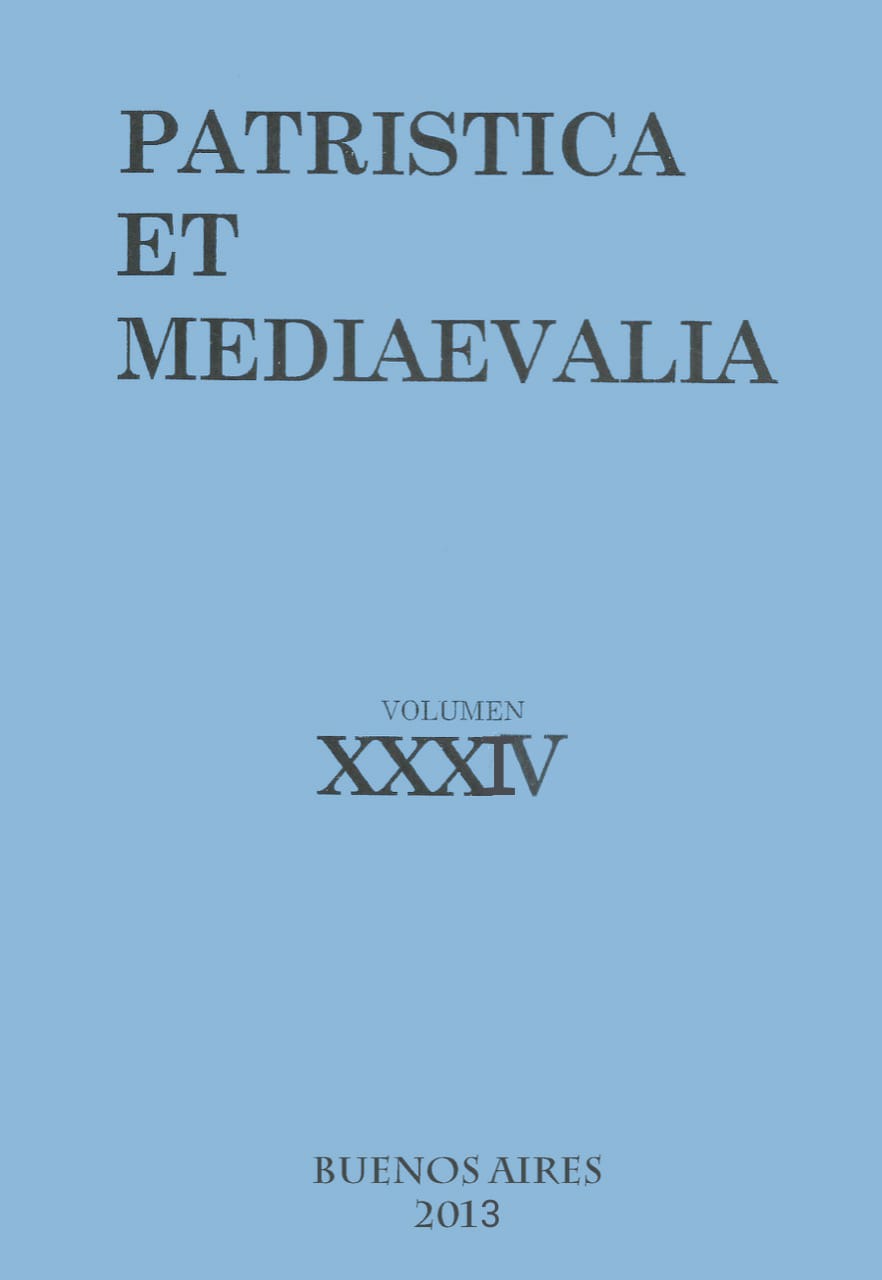Who is Peter? Notes on the Exegesis of Mt 16, 13-19 in the Homily In nativitate sancti Petri of Heiric of Auxerre
Abstract
Mt 16, 13-19 was used after the Gregorian Reform to support the papal supremacy over the Church. However, pre-Gregorian exegesis of these verses is not necessarily pro-papal, but conciliar exegesis. Heiric of Auxerre's exegesis of these verses, probably influenced by the Venerable Bede, continues this conciliar idea and also adds a Christological turn.Downloads
References
Barré, H. (1962). Les Homéliaires carolingiens de l’Ecole d’Auxerre. Authenticité - Inventaire - Tableaux comparatifs - Initia. Città del Vaticano. Studi i Testi 225.
Brown, G. (1994). The Carolingian Renaissance. En Mckitterrick, R. (ed). Carolingian culture: emulation and innovation. Cambridge: Cambridge University Press, 1-51.
Costambeys, M. (2007). Power and Patronage in Early Medieval Italy. Local Society, Italian Politics and the Abbey of Farfa, c. 690-840. Cambridge: Cambridge University Press.
Cristiani, M. (1997). Tempo rituale e tempo storico. Comunione cristiana e sacrificio. Le controversie eucaristiche nell’alto medioevo. Spoleto: Fondazione CISAM.
Deflou-Leca, N. (2010). Saint-Germain d’Auxerre et ses dépendances (Ve-XIIIe siècles). Un monastère bénédictin dans la société du haut Moyen Âge. Saint-Étienne. Publications de l’Université de Saint-Étienne (Collection , CERCOR).
De Gennaro, J. (1988). Una aproximación al eriugenismo de Heirico de Auxerre. Patristica et Mediaevalia, 9, 99-104.
Holtz, L. (1991). L’ecole d’Auxerre. En Iogna-Prat, D., Jeudy, C. & Lobrichon, G. (1991). L’École carolingienne d’Auxerre de Murethach à Remi 830-908. Paris: Beauchesne, 132-138.
Iogna-Prat, D., Jeudy, C. & Lobrichon, G. (1991). L’École carolingienne d’Auxerre de Murethach à Remi 830-908. Paris: Beauchesne.
Iogna-Prat, D. (2006). La Maison Dieu. Une histoire monumentale de l’Eglise au Moyen Âge. Paris: SEUIL, 153-203.
Jeauneau, E. (1991). Heiric d’Auxerre disciple de Jean Scot. En Iogna-Prat, D., Jeudy, C. & Lobrichon, G. (1991). L’École carolingienne d’Auxerre de Murethach à Remi 830-908. Paris: Beauchesne, 353-370.
Jolivet, J. (1958). Godescalc d’Orbais et la Trinité. La méthode de la théologie à l’epoche carolingienne. Paris: Vrin.
Marenbon, J. (1981). From the Circle of Alcuin to the School of Auxerre, Logic, Theology and Philosophy in Early Middle Ages. Cambridge: Cambridge University Press.
Mc Keon, P. R. (1978). Hincmar of Laon and Carolingian Politics. Urbana/Chicago/London: University of Illinois Press.
Noble, F. X. (2009). Images, Iconoclasm, and the Carolingians. Philadelphia: University of Pennsylvania Press.
Quadri, R. (1991). L’omeliario di Eirico di Auxerre. En Iogna-Prat, D., Jeudy, C. & Lobrichon, G. (1991). L’École carolingienne d’Auxerre de Murethach à Remi 830-908. Paris: Beauchesne, 275-282.
Sassier, Y. (2002). Royauté et idéologie au Moyen Âge. Bas-Empire, monde franc, France (IVe-XIIIe siècle). Paris: Armand Colin.
Shimahara, S. (ed) [2007]. Études d’exégèse carolingienne: autour d’Hamon d’Auxerre. Turnhout: Brepols.
1. The authors who publish in this magazine accept the following conditions:
-
They retain the copyright and grant to the magazine the right of the first publication, with the work registered under the Attribution-ShareAlike 4.0 International License that allows third parties to use what is published as long as they mention the authorship of the work and the first publication in this magazine.
-
They can make other independent and additional contractual agreements for the non-exclusive distribution of the version of the article published in this magazine (eg. include it in an institutional repository or publish it in a book) provided that they clearly indicate that the work was first published in this journal.
-
They are allowed and recommended to publish their work on the Internet (for example on institutional or personal pages).
2. AutoArchive Conditions. Authors are allowed and encouraged to distribute post-print electronic versions of their manuscripts because it promotes their circulation, a possible increase of quotation and a major reach among the Academic community. Color RoMEO: blue.













